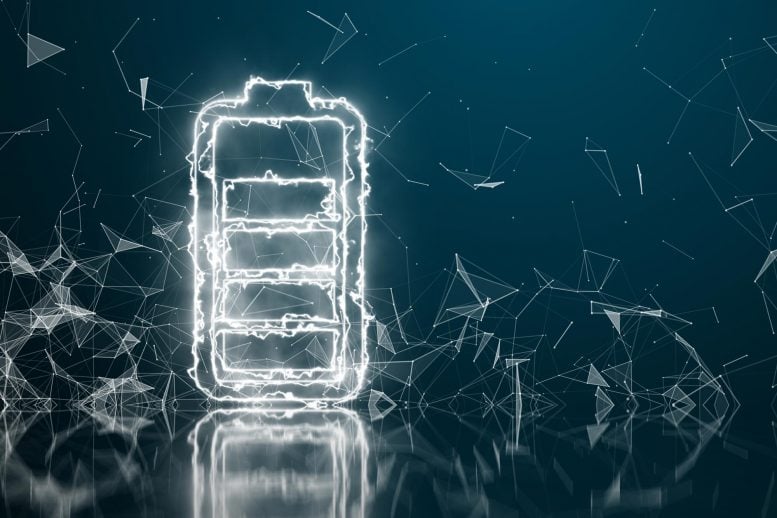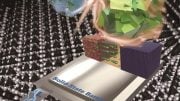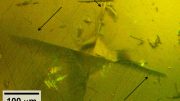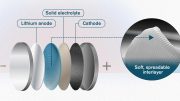
A new study suggests that a low-cost and large-scale production of high-capacity anodes for use in all-solid-state Li batteries is possible.
Large volume expansion during charging, the obstacle to using Si anodes in conventional liquid electrolytes, helps a Si anode composed of nanoparticles in solid electrolytes has high-rate discharge capability approaching those of Si films.
A new study led by NIMS researchers reveals that, in solid electrolytes, a Si anode composed only of commercial Si nanoparticles prepared by spray deposition – the method is a cost-effective, atmospheric technique – exhibits excellent electrode performance, which has previously been observed only for film electrodes prepared by evaporation processes. This new result therefore suggests that a low-cost and large-scale production of high-capacity anodes for use in all-solid-state Li batteries is possible.
Si has a theoretical capacity of ~4,200 mAh/g, which is approximately 11 times higher than that of the graphite commonly used as the anode-active material in commercial Li-ion batteries. Replacing the traditional graphite by Si can extend significantly the driving range per charge of electric vehicles. However, its huge volume change (~300%) during lithiation and delithiation – charge and discharge – hinders its practical application in the batteries.
In conventional liquid electrolytes, the use of polymeric binders is necessary to hold the active material particles in the electrode together and maintain their adhesion to the surface of metal current collectors. The repeated huge volume change of Si causes the particle isolation and thus leads to losing the active material, which results in a continuous capacity loss.
In solid-state cells, the active material is placed between two solid components – solid electrolyte separator layer and metal current collector – which enables avoidance of tackling the problem – electrical isolation of the active material. In fact, as reported previously by the team of NIMS researchers, the sputter-deposited pure Si films delivering practical areal capacities exceeding 2.2 mAh/cm2 exhibit excellent cycling stability and high-rate discharge capabilities in solid electrolytes. Nonetheless, cost-effective and industrially scalable synthesis of the anode for all-solid-state Li batteries remains a great challenge.

Cross-sectional field emission scanning electron microscope (FE-SEM) images of the as-prepared Si anode composed of spray-deposited nanoparticles on stainless steel current collector and the anode in the fully charged state. Credit: NIMS
The team of NIMS researchers has taken another synthesis approach toward developing the high-performance anode for all-solid-state Li batteries with commercial Si nanoparticles, and found a unique phenomenon to the nanoparticles in the solid-state cell: upon lithiation, they undergo volume expansion, structural compaction, and appreciable coalescence in the confined space between the solid electrolyte separator layer and metal current collector to form a continuous film similar to that prepared by the evaporation process. The anode composed of nanoparticles prepared by spray deposition therefore exhibits excellent electrode performance, which has previously been observed only for sputter-deposited film electrodes. The spray deposition method is a cost-effective, atmospheric technique that can be used for large-scale production. Hence, the findings will pave the way for low-cost and large-scale production of high-capacity anodes for use in all-solid-state Li batteries.
Continuing efforts by the team of NIMS researchers to improve the cyclability in the anode having the increased areal mass loading of nanoparticles are in progress to meet the requirements of electric vehicles.
A study describing the Si anode composed only of commercial nanoparticles in a sulfide solid electrolyte appears online on September 24, 2019, in the journal ACS Applied Energy Materials.
Reference: “Anode Properties of Si Nanoparticles in All-Solid-State Li Batteries” by Narumi Ohta, Shin Kimura, Junichi Sakabe, Kazutaka Mitsuishi, Tsuyoshi Ohnishi and Kazunori Takada, 24 September 2019, ACS Applied Energy Materials.
DOI: 10.1021/acsaem.9b01517
The New Energy and Industrial Technology Development Organization (NEDO) and Toyota Motor Corporation supported partially this research through project P12003 entitled “Applied and Practical LiB Development for Automobiles and Multiple Applications.”







Be the first to comment on "High-Performance Si Nanoparticle Anode for All-Solid-State Li Batteries"